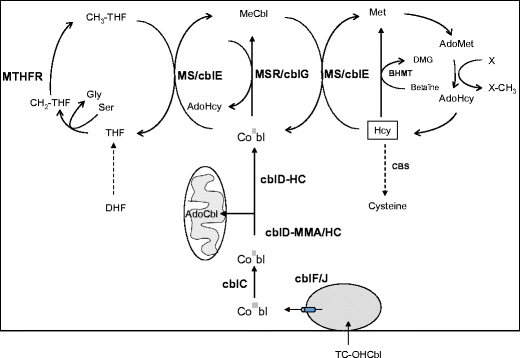Folinic Acid Dmg B12 Dosage Chart

I ordered TMG 500 mg with Folinic Acid & Methyl B-12 for my 2 year old son who has autism. This product was recommended by my Defeat Autism Now doctor. We have just started it and I am hoping it will help him with his speech. Folic acid and folinic acid are both forms of vitamin B9 and are classified as folates. Folates are required by the human body to perform many functions including cell division, growth, and the generation of red blood cells. Although folinic acid is pharmaceutically different to folic acid, both work in reasonably similar ways to each other. This study, a randomized controlled trial, found no incremental benefit (further reduction of toxicity) with a higher dose of folic acid (30 mg per week) compared to the usual dose (10 mg per week). This was similar to the previous trial by Morgan et al. That compared 27.5 and 5.0 mg per week of folic acid 15. Folinic acid is often confused with folic acid. Both are forms of folate (vitamin B9) but one is healthy, and one has many dangerous side effects. Folinic acid is the healthy form of folate, while folic acid is a dangerous synthetic. Both B12 and B9 work together to promote optimal health and brain function.
Information from the National Library of MedicineChoosing to participate in a study is an important personal decision. Talk with your doctor and family members or friends about deciding to join a study. To learn more about this study, you or your doctor may contact the study research staff using the contacts provided below. For general information, Learn About Clinical Studies.
| Ages Eligible for Study: | 3 Years to 14 Years (Child) |
| Sexes Eligible for Study: | All |
| Accepts Healthy Volunteers: | No |
Inclusion Criteria
- 1. Autism Spectrum Disorder (as defined by a gold standard measure for ASD diagnosis: the Autism Diagnostic Observation Schedule and/or Autism Diagnostic Interview-Revised). In an event where sufficient diagnostic information is lacking, and the PI believes that the clients meet all other inclusion criteria and a prospective diagnosis of an ASD is clinically warranted, and a formal diagnosis is scheduled to occur within a reasonable time frame from the date of study entry but before dispersing study drug/placebo, then the client may be considered as potentially eligible. Furthermore, a research-reliable rater must complete the diagnosis.
- 2. 3 years to 14 years of age
- 3. Language Impairment
- 4. Ability to maintain complementary, traditional, and/or behavioral interventions and to attempt to keep them constant during the study, when possible.
- 5. Unchanged complementary, traditional, and/or behavioral intervention for approximately 8 weeks prior to study entry, when possible.
Exclusion Criteria
Folinic Acid Dose
- 1. Currently taking Antipsychotic medication
- 2. Vitamin or Element Supplementation that exceeds the IOM Tolerable Upper Intake Levels
- 3. Any moderate to severe positive response on that Aberrant Behavior Checklist Irritability subscale on questions: Injures self on purpose, is aggressive to other children or adults (verbally or physically), deliberately hurts himself/herself, and/or does physical violence to self.
- 4. Prematurity (<34 weeks gestation) as determined by medical history
5. Current uncontrolled gastroesophageal reflux or ongoing significant kidney or liver disease. The PI will determine whether any ongoing kidney or liver disease is significant.
6. Drugs known to affect folate metabolism (e.g., methotrexate) and their derivatives.
7. Profound sensory deficits (e.g. hearing and vision deficits) that could interfere with the interpretation of study results.
8. Any major genetic defect, or mutation, that is known to be associated with disease or possibly related to disease that affects folate, methylation, and/or glutathione metabolism. Questions regarding eligibility concerning this criterion will be addressed with the lead site PI before enrollment into the trial.
9. Documented current or active seizures, as defined by a clinical seizure or abnormal EEG within the past 6 months.
10. Children with major single-gene abnormalities, such as Fragile X, Rett's Syndrome, etc., recognized chromosome syndromes, such as 15q11 microdeletion syndrome, or have been diagnosed with other well recognized syndromes, such as fetal alcohol syndrome. Children with copy number variants that represent known polymorphisms or benign changes will not be excluded. Questions regarding eligibility concerning this criterion should be addressed with the lead site PI before enrollment into the trial.
Despite all of the changes that have effectively made rolling an Elemental Shaman less viable, they remain very middle-of-the-pack and could be extremely useful in a variety of encounters.Single Target Score: 3/5Multi-Target Score: 3/5Survivability Score: 3.5/5Total Score: 9.5 Best DPS Class in WoW: Battle for Azeroth Windwalker Monk – 16th Best DPS Class in World of Warcraft: Battle for Azeroth. Windwalker Monks make for a fairly flexible damage dealer with a focus on single target damage encounters.

11. Children diagnosed with congenital brain malformations, acquired brain insults, congenital or acquired microcephaly, or infection of the central nervous system.
12. Children with major well-defined metabolic disease, such as mitochondrial disease, urea cycle disorders, succinic semialdehyde dehydrogenase deficiency, creatine deficiency syndromes, etc.
13. Current therapies that could potentially interfere with interpretation of study results. Free adware remover for mac.
14. Other conditions which, in the opinion of the study team, will place subjects at unacceptable risk or result in inability to interpret the study data.
15. Unwillingness or inability to return for follow-up testing at specified interval.